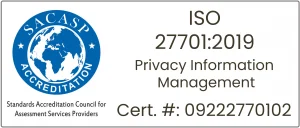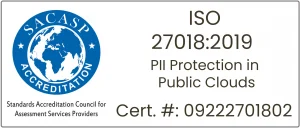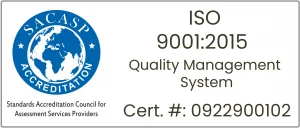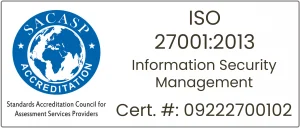Multilateral platforms strengthen cross-border payments, enabling participants from different jurisdictions to exchange money directly, without relying on multiple intermediaries or legacy banking infrastructures.
It is a great choice for global payments, as it allows transactions from multiple jurisdictions to seamlessly transfer funds. Built with flexibility and scalability in mind, with a tiered structure, where indirect parties can use its centralised payment facilities without establishing a contractual relationship.
It is highly regulated by stakeholders from various countries, and also overseen comprehensively, where every participant complies with a single overarching rulebook making it a reliable source of secure cross-border transactions. In this blog, let us understand the importance of Multilateral Platforms and how it operates.
G20 conclave and its impacts:
The G20 conclave in the year 2020 made a significant impact in strengthening international payments and put forth a roadmap, that helps in streamlining remittance across borders. The main aim is to facilitate faster, cheaper, and more transparent transactions across borders. The main aim is to promote digital financial inclusion and enable universal access to affordable and safe financial services, by promoting cooperation among countries to enhance cross-border regulatory frameworks and promote standardisation.
One of the important decisions that took prominence was how multilateral platforms would enhance payment services and improve the efficiency of PSP’s digitalisation strategies. There are two approaches namely growth or greenfield approach, building upon the current multilateral networks, and creating a fresh universal infrastructure from scratch. The financial world would strengthen the currency exchange by drilling down the possibilities.
Multilateral Platforms– Transforming the Landscape of Cross-Border Payments
Multilateral platforms have innovated the traditional process by allowing more direct access between payer and recipient, which reduces the complexity cross-border payment methods. As they don’t require end users to use the same PSP as their partner for funds to transfer successfully, they are different from the usual banking system.
Multilateral platforms would strengthen cross-border payments, enabling participants from different jurisdictions to exchange money directly, without relying on multiple intermediaries or legacy banking infrastructures. Network models are an effective way to facilitate multilateral payments. Meanwhile, all PSPs on a common platform need to follow one collective set of rules regardless of domestic or international transactions. Multilateral platforms and interlinking arrangements are similar in benefits, costs, and risks, with comparable design choices.
Back-end arrangements for cross-border payments
There are four back-end arrangements for cross-border payments: namely correspondent banking, single system or closed loop, interlinking, and peer-to-peer. Multilateral platforms are often grouped with interlinking arrangements.
Correspondent banking facilitates international trade and financial inclusion by connecting banks across the globe. By forming relationships between smaller domestically focused PSPs and larger global institutions, these arrangements enable transactions to travel in chains of linked intermediaries from one jurisdiction to another – allowing for swift cross-border payments. In a closed loop or single platform system, payments across multiple jurisdictions are handled entirely within the same PSP, where the transactions are known as in-house and intragroup. The interlinking arrangement has a combination of contract agreements, technical links, and standards. These enable participating PSPs in two different countries to send money as if they are using the same payment system, without opening a bank account.
Peer-to-peer payments gained a massive boom in their operations powered by distributed ledger technologies, including crypto assets, stablecoin arrangements, and CBDC designs. These transactions allow individuals to send money directly to each other quickly, securely, and without the need for any intermediaries.
Multilateral Platform – Features:
Liquidity management: liquidity management is carried out by intraday credit, netting, and collateral management to ensure timely and secure settlement of payments.
Payment Messaging Services: Payment messaging services in multilateral platforms include authentication, initiation, submission, and conditionality, as well as standardised messaging, proxy lookup registries, pre-validation services, APIs for technical integration with third parties, limited or 24/7/365 operating hours, quantity and time limits, and capital flow management measures to ensure efficient and secure payment processing
Compliance and data processing: AML/CFT and fraud monitoring, KYC registries, and privacy and data management are essential components of compliant processing. Financial organisations need to implement these measures to prevent illegal activities, ensure regulatory compliance, and protect customer data.
Clearing including netting: Netting allows parties to settle their transactions on a net basis, rather than on a gross basis. Netting can be done on a bilateral or multilateral basis, depending on the nature of the transaction and the parties involved.
Settlement: legal decisiveness and technical settlement, settlement system type, settlement currency, settlement asset, and settlement risk management measures are important reflections in the settlement of financial transactions. Financial institutions can minimise settlement risk and ensure timely and efficient settlement of transactions.
Foreign exchange: Currency conversion in cross border payments is a settlement mechanism used to ensure that both parties in an FX transaction receive their payments simultaneously and without risk of settlement failure.
Network Models – Impact on Rules, Efficiency, and Cost-Effectiveness
The choice of network model can impact the development of a platform’s rules and procedures. In a hub and spoke model, the hub entity can operate with a minimal set of rules if the laws and regulations across the spokes are consistent. On the contrary, in a common platform model, the platform’s rules and procedures must be consistent with the relevant laws and regulations of each jurisdiction. Developing a common platform can be more time-consuming and costly, but once established, it can be more efficient to operate and maintain than a hub and spoke system. A common platform offers more consistent service to participants, better cost recovery, and can recover costs more efficiently.
Exploring Diverse Currency Arrangements for Enhanced Transaction Processing:
Multilateral platforms can be designed as a single currency, multicurrency, or cross-currency platform. Single-currency platforms handle and process transactions in one currency, and multicurrency platforms process using segregated account structures operating in multiple currencies.
Cross-currency platforms allow for currency conversion on the platform itself. The choice of currency arrangement depends on the purpose of the platform and various factors, such as the liquidity of the chosen currency, exchange restrictions, and exchange rate regimes. Several multilateral platforms have expanded their services to include more regional and global reserve currencies.
The Power of Multilateral Platforms in Overcoming Frictions Across Cross-Border Payments
Cross-border payments face several challenges, including legacy technology, fragmented data formats, funding costs, long transaction chains, weak competition, complex compliance checks, and limited operating hours. Multilateral platforms have the potential to address many of these frictions.
Let us in detail look at various factors altering the multilateral platforms.
Embracing Advanced Technology for Seamless Global Integration:
New multilateral platforms can overcome the friction of legacy technology by using the latest technology and avoiding reliance on batch processing. They can also implement new payment messaging standards like ISO 20022 to improve data quality and facilitate straight-through processing. APIs can further connect these platforms with existing payment systems and offer ancillary services like fraud monitoring and pre-validation. However, the implementation of these services may add complexity and costs, as well as potential regulatory adjustments. New platforms may face a trade-off between innovation and interoperability, and they may offer ancillary services like message translation to accommodate less advanced participants.
Optimising Funding Efficiency on Liquidity Pooling and Currency Exchange:
Multilateral platforms can lower funding costs by pooling liquidity and enabling easy currency exchange. Participants can hold accounts in multiple currencies and hedge against FX risk. The platform’s funding costs depend on whether it uses deferred net settlement or real-time gross settlement. DNS is less liquidity-intensive but exposes participants to credit risk. Pre-funding can reduce credit risk, but it may increase funding costs. Multilateral platforms cannot eliminate funding costs, but they have options to address funding issues, depending on the platform’s design choices.
Streamlining Payment Chains by Enhancing Efficiency and Reducing Costs:
By allowing the participants to send and receive payments directly, Multilateral platforms are shortening the transaction chains. Many multiple intermediaries are getting replaced, and challenges involved in the costs are also being curbed. In several payment corridors, PSPs depend on a chain of correspondent banks, which raises the overall price of the transactions. Multilateral platforms play a major role in reducing costs and increasing payment speed by connecting originating and beneficiary PSPs more directly.
Adopting Competition and Financial Inclusion by Empowering PSPs:
Multilateral platforms can increase competition by allowing payment service providers (PSPs) to connect directly and offer cross-border services in a particular corridor, instead of establishing separate correspondent banking relationships. They also serve as a single access point to a region, making it easier and cheaper for foreign entities to transact with banks, PSPs, and end users in that region, which may mitigate the effects of de-risking correspondent banking relationships. Multilateral platforms must create a level playing field between banks and non-bank PSPs and increase competition, lower costs for end users, and improve financial inclusion.
Enhancing Compliance and Security by Strengthening AML/CFT Measures:
Achieving high-quality compliance processes through comprehensive monitoring and transaction screening tools available in the Multilateral platforms is very effective. Having a comprehensive view of the transaction chain is helping several operators detect anomalies, and comply with AML/CFT regulations. Reference data of the anomalies or security breaches become very important to identify and curb the challenges. The platforms need to limit participation to enforce tighter regulations. By implementing several checkpoints, the platforms can streamline the complaint process.
Enhancing Operational Efficiency and Ensuring 24/7 seamless Operations
The choice of the multilateral platform makes a great impact on operating hours. If it serves across borders, touching different time zones, it is very important for the platform to operate round the clock, all the week, and throughout the year, to ensure a long settlement window. This has also impacted the operational cost, as it involves a lot of effort, technology, and skilled professionals to handle without glitches.
Conclusion:
Multilateral platforms for cross-border payments are an important tool for promoting financial inclusion, facilitating trade and investment, and improving global economic integration. As digital technologies continue to evolve, these platforms are likely to play an increasingly important role in the global payments landscape.
NetRemit, one of the flagship products from Macro Global has been providing cross border payment solution for banks, MTOs to ensure seamless operations We also enhance the capabilities of banks to ensure seamless transactions across borders. To partner with us call us at +44 (0)204 574 2433 or mail us at salesdesk@MacroGlobal.co.uk.


















